Giro d'Italia: The ambush stages
The 2021 Giro might not be won on these stages, but it certainly can be lost
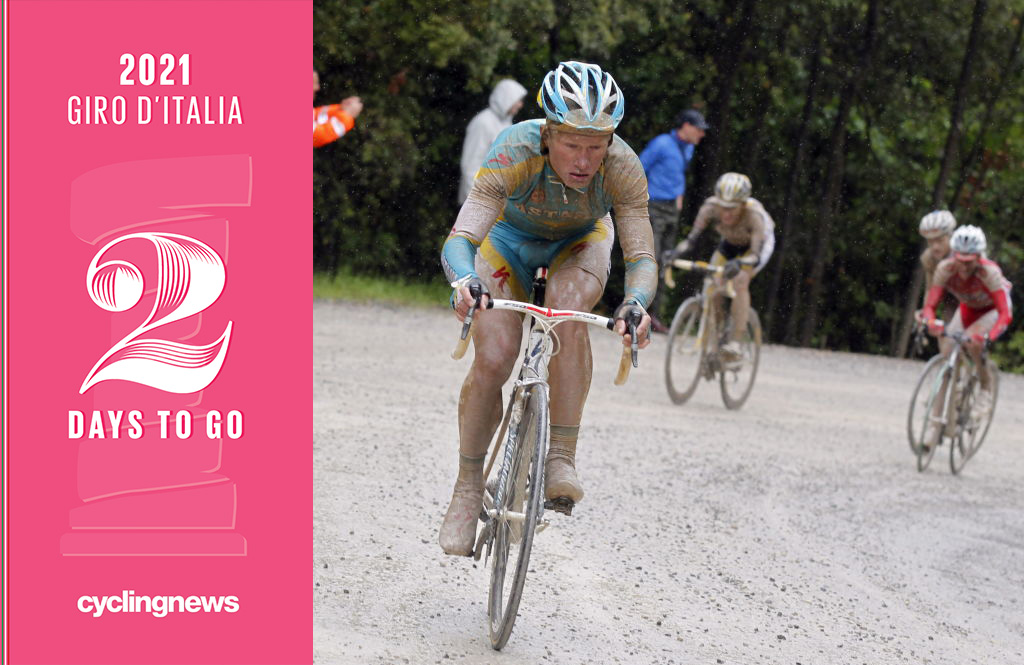
As ever, the 2021 Giro d'Italia is a backloaded affair, with the toughest mountains of the Dolomites and Alps close to the finish in Milan simply by dent of geography. Following the start in Turin on Saturday, the peloton will take on two summit finishes in the Apennines, though the major general classification damage will come in week three.
It'll be a two-week wait until the riders reach the brutal slopes of Monte Zoncolan. As it has on the past six visits, the summit finish will bring gaps in the minutes and sort out the GC, but we needn't wait that long for the reshuffle to start.
While there is a fair share of sprint stages on the route, which takes in the Po Valley, Adriatic coast, and the Apennine foothills across the first two-thirds of the race, there are also a number of stages which look ripe for GC attacks from risk-taking contenders.
The main GC flashpoints during the first Grand Tour of the season are obvious – mountain stages and time trials are easy to spot on a stage list – but here we take a look at the less-obvious chances for the big names to take time on their rivals.
These are the ambush stages.
Stage 3, May 10: Biella – Canale, 190km
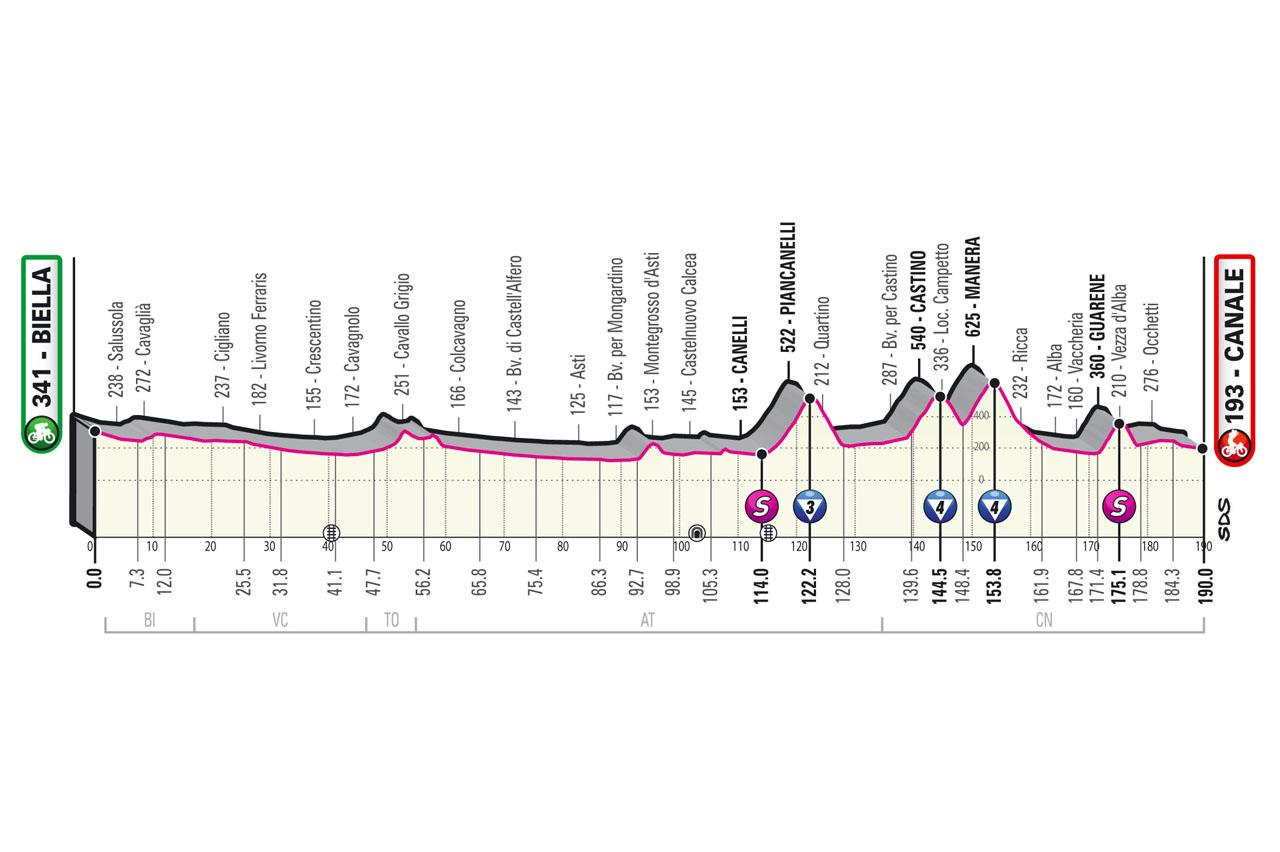
After the short opening time trial in Turin and a largely pan-flat sprint stage to Novara, stage 3 brings a different challenge, though still nothing too arduous for the opening days of the Giro.
Even if the run south through Piemonte is likely to end with the likes of Peter Sagan, Caleb Ewan et al battling it out at the finish, there are still a few difficulties to spice up the closing kilometres of the stage, a chance for riders to take a flyer in the hopes of holding off the sprinters.
Get The Leadout Newsletter
The latest race content, interviews, features, reviews and expert buying guides, direct to your inbox!
The climb to the town of Guarene may hold an intermediate sprint at the top, but it’s the most likely to provoke a late move, lying 15.5 kilometres from the finish line. Starting in Vaccheria, the road passes through vineyards as it heads up and twists towards the top, with a 6.8 per cent average gradient for the 2.6-kilometre climb.
It will have been a disastrous opening weekend if a GC contender is already trying to gain time here, though, given the unlikeliness of success. Another potential launchpad comes shortly afterwards, the 500-metre climb to Occhetti at 9.5 kilometres from the finish. Best to look out for puncheurs chancing their arm, or the last throes of the breakaway on these climbs.
Stage 4, May 11: Piacenza – Sestola, 187km

The next day brings with it a tougher challenge, a proper hilly day with three categorised climbs on the menu among many other climbs and rises. The finishing location is familiar, with Sestola hosting stage victories for Giulio Ciccone and Pieter Weening in recent years.
However, it's a different route this time around, with the Colle Passerino providing the final challenge of the day, its peak coming just 2.5 kilometres from the finish line. Even though it's a 4.3-kilometre climb and not a summit finish, it's the first day where the climbers and GC contenders can show off.
The final climb – which averages 9.5 per cent – could provide a real opportunity to take some time, especially with barely a metre of flat road over the final 105 kilometres of the day. The third-category Montemolino and the unclassified climbs to Lama Mocogno and Montecreto come in the last 50 kilometres, too.
It's not a day where a rider can win the Giro, but it could see some riders caught out by the climbing. Realistically, stage 4 is the first road stage to watch for those keeping an eye on the GC race.
Stage 11, May 19: Perugia – Montalcino, 162km
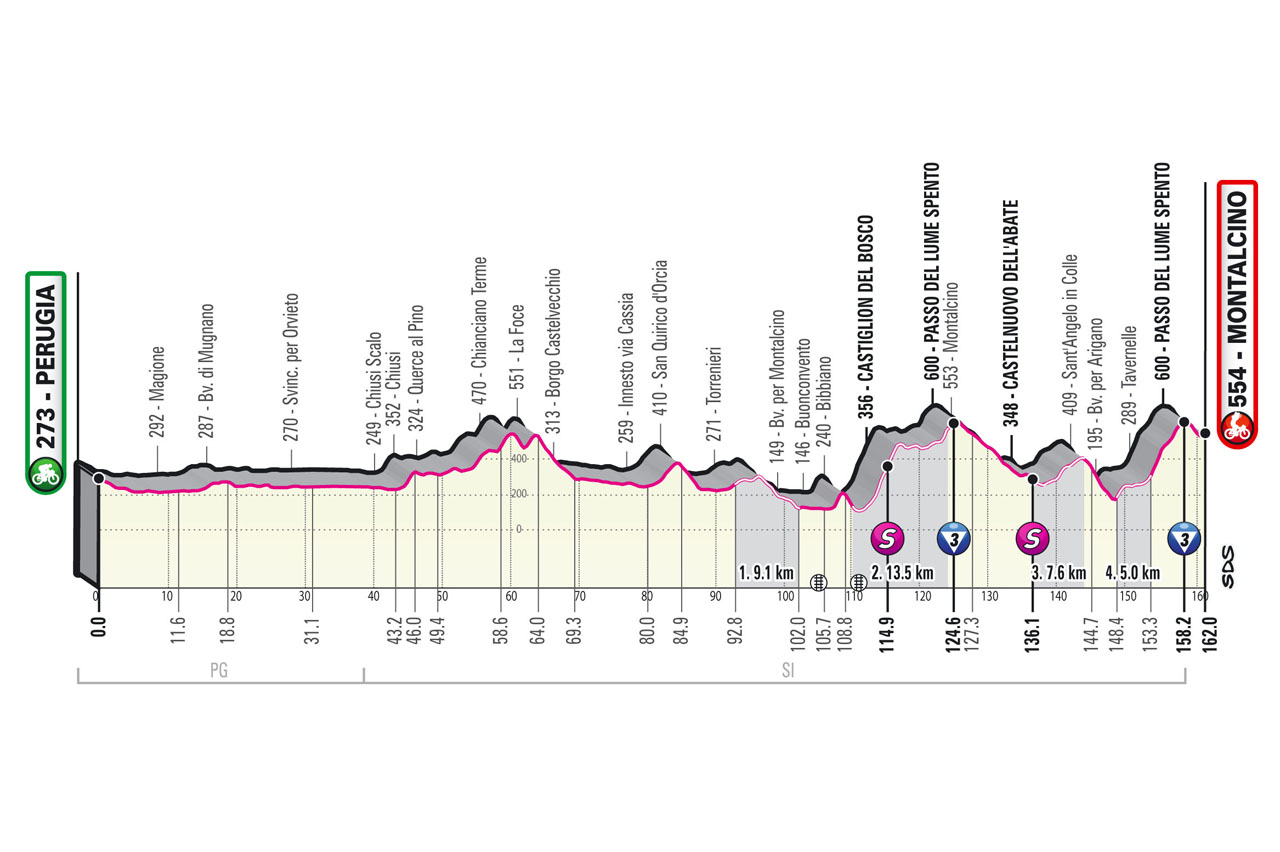
The hard mountain stages of the Zoncolan, Dolomites, and Sega di Ala might have been the first to catch the eye when the Giro d'Italia route was unveiled back in February, but stage 11 was not far behind.
It has been 11 long years since the Giro last visited Montalcino, with every edition since that Ivan Basso vs David Arroyo classic seemingly studiously avoiding the sterrato of Tuscany. Finally, they're back as the peloton travel from Perugia west to Torrenieri, south of Siena, and take on four gravel sectors en route to the finish.
Only two sterrati featured back in 2010, but the rain and ensuing sludgefeast made sure the stage went down in legend as Cadel Evans won in the muddied rainbow jersey and Basso lost over two minutes after crashing.
With more gravel on the menu and plenty of Tuscan hill climbing too, it's sure to be a stage many riders have marked in their calendars as a day to attack or a day to try and stay safe. Basso's crash over a decade ago didn't end up costing him the Giro, but if stage 11 is as challenging as that day was, we might just witness the death of some GC hopes in Montalcino.
Stage 12, May 20: Siena – Bagno di Romagna, 212km
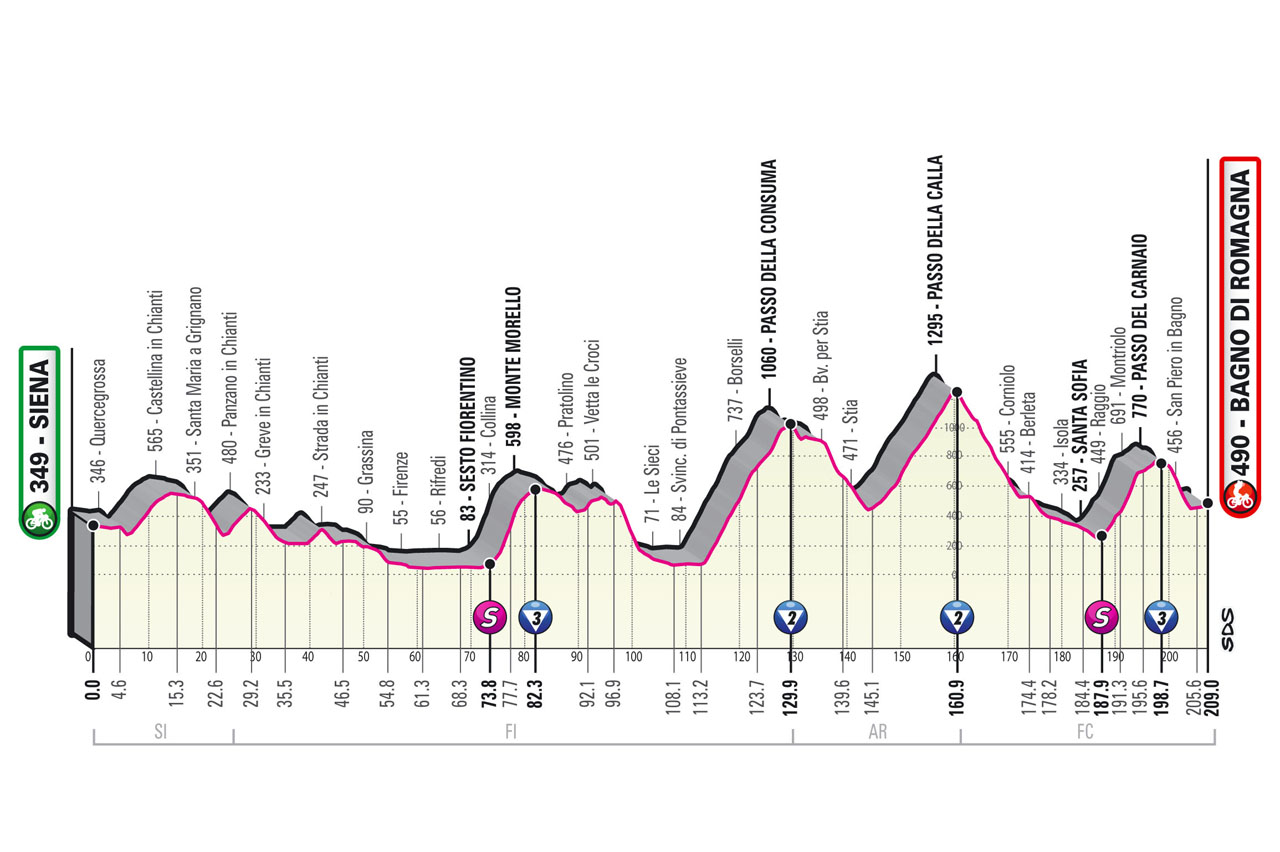
Our fourth stage to watch out for comes the very next day, with another challenging – and long – stage in the hills awaiting the peloton. There are two third-category and two second-category climbs on the road to Bagno di Romagn, which hosted a similarly tough stage in 2017, won by Omar Fraile.
Three of those climbs are packed into the second half of the stage, though they're all long and not overwhelmingly steep. The biggest challenge will come on the final ascent of the day, the Passo del Carnaio. It averages 5 per cent over 10.8 kilometres, but that's skewed by softer slopes towards the top. Further down comes a 3-kilometre section at a tough 8.9 per cent, though, and at 11.5 kilometres from the line, it could tempt some riders.
Given the stage follows directly on from Montalcino, it could be a hard day out if the previous day's racing was a brutal as the 2011 stage. However, in normal circumstances, it looks like a day for the breakaway. Maybe, though, we'll see a GC rider who is already lagging behind have a go towards the end.
Stage 15, May 23: Grado – Gorizia, 146km
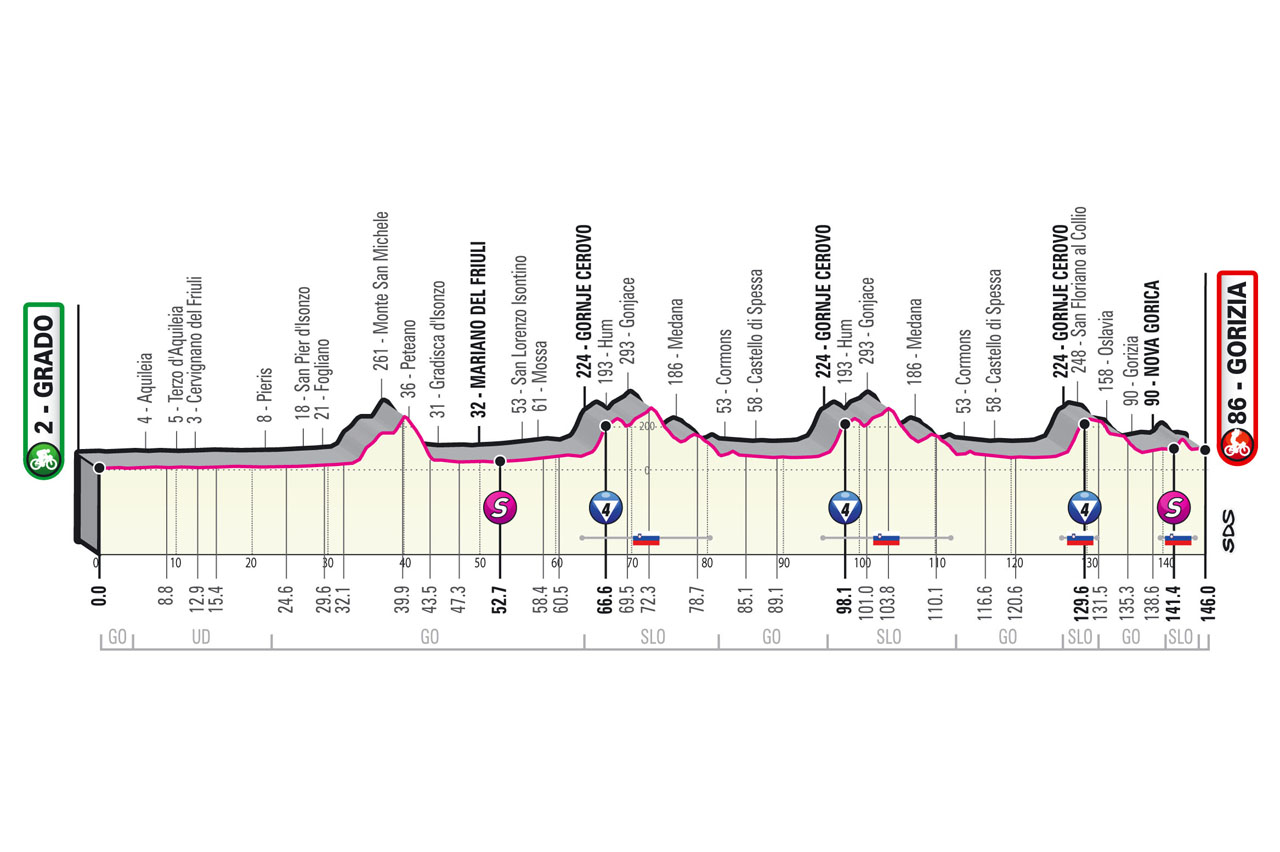
Our final ambush stage to watch lies on the Italo-Slovenian border, taking in a hilly circuit that features a third-category climb across the border. Circuit races are never straightforward, and this one is no different with the 1.7-kilometre Gornje Cerovo climb measuring in at an 8.1 per cent gradient and featuring three times.
The final ascent of the climb lies 17 kilometres from the finish, but the double-digit gradients on the climb could serve as a nice launchpad for attacks. A final hill at Saver (600 metres at 8.1 per cent) lies just 5.5 kilometres from the line.
It's the final week of the Giro, though, and this stage comes between the Zoncolan and the big Dolomite day featuring the Passo Fedaia, Passo Pordoi, and Passo Giau. Given that, it's hard to imagine a scenario where the pink jersey would be on the attack on a stage like this. At this point, it should all about saving it for the high mountains.
Dani Ostanek is Senior News Writer at Cyclingnews, having joined in 2017 as a freelance contributor and later being hired full-time. Before joining the team, she had written for numerous major publications in the cycling world, including CyclingWeekly and Rouleur. She writes and edits at Cyclingnews as well as running newsletter, social media, and how to watch campaigns.
Dani has reported from the world's top races, including the Tour de France, Road World Championships, and the spring Classics. She has interviewed many of the sport's biggest stars, including Mathieu van der Poel, Demi Vollering, and Remco Evenepoel, and her favourite races are the Giro d'Italia, Strade Bianche and Paris-Roubaix.
Season highlights from 2024 include reporting from Paris-Roubaix – 'Unless I'm in an ambulance, I'm finishing this race' – Cyrus Monk, the last man home at Paris-Roubaix – and the Tour de France – 'Disbelief', gratitude, and family – Mark Cavendish celebrates a record-breaking Tour de France sprint win.